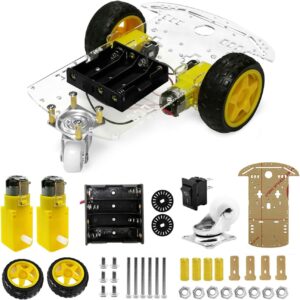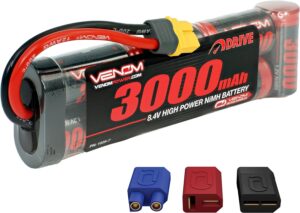As an RC enthusiast, you pour your heart and soul into your prized radio-controlled vehicles. Nothing beats the thrill of seeing your customized creation come to life and tear across the terrain. However, all that fun can slam to a halt the moment something breaks mid-run. Don’t let lackluster maintenance leave you stranded in the pits! By following some key RC car maintenance tips, you can extend the life of your vehicles and keep them performing at their peak. Read on to learn vital habits that will have you racing circles around the competition.
Tip 1: Clean the Wheels and Chassis

Before hitting the track or trail, be sure to give your RC a thorough bath. Dirt, dust and debris can build up on the wheels and chassis over time, creating drag and friction that will slow your car down. Grab some towels, cleaning brushes, and soap and scrub every nook and cranny. Pay extra attention to the wheel wells and suspension components which are magnets for grime. Taking the time to properly clean your ride will allow it to run faster and handle better. The difference will be clear as day once you see that shiny chassis gliding smoothly across the terrain.
Tip 2: Check the Battery and Connectors

Nothing ruins the fun faster than a dead battery or loose connector. Before each use, pop open the battery compartments and ensure the batteries are charged and correctly installed. While you’re in there, check that the battery connectors are clean, undamaged, and making good contact. Loose or corroded connectors can cause power issues that will have your RC sputtering to a halt. Take time to wiggle the connectors and confirm they are snug. Take care of your power system and it will take care of you. Nobody likes a dead battery, so show yours some love. With power sources inspected, you can hit the throttle with confidence, knowing your ride won’t conk out mid-run.
Tip 3: Test the Wheels and Drivetrain
An overlooked maintenance task is testing the wheels and drivetrain systems. Issues here can significantly hinder performance. Grab your wrenches and inspect each wheel, rolling them to feel for binding or roughness. Ensure axle nuts are tight. Then lift the drive wheels and hit the throttle to diagnose drivetrain problems. Listen for grinding or whining coming from the gears, shafts, or differentials. Catching issues early prevents damage down the road. Don’t wait for problems to occur at full speed. Regularly testing the integrity of the wheels and drivetrain takes little time but pays big dividends in reliability.
Tip 4: Inspect the Transmitter and Receiver
While not the most glamorous task, verifying proper operation of the transmitter and receiver is mission-critical. Before each drive, turn on the system and check for full battery levels, solid connectivity, and smooth control inputs. Move the steering and throttle controls through their full range to confirm precise servo response. Mismatched channels or weak signal strength might indicate issues with the radio gear. Take time to inspect antennas, output wiring, and connections too. Proper transmitter and receiver operation is vital for maintaining control of your prized RC. Don’t neglect these critical electronics.
Tip 5: Lubricate Moving Parts Regularly
Over time, moving parts can become dry, promoting increased friction and wear. Don’t let this happen! Get into a habit of periodically lubricating key components like suspensions pins, drive shafts, hinges, bearings, and gears. Use the proper lube for each application. Light oil works for most needs while grease suits high-load areas like diffs. Regular lube jobs reduce friction, allowing your RC to run cooler, faster, and with less strain. A drop of lube here and there takes little effort but pays off in prolonged component life and smooth operation. Keep things slick for top performance.
Tip 6: Replace Worn Parts
While nothing lasts forever, worn parts left unchanged can quickly snowball into greater damage. At the first sign of degradation in key components like bearings, shocks, or gears, take the initiative to swap in fresh hardware. Addressing issues early reduces repair bills and down time compared to waiting for full failures. Check steering linkages, suspension joints, driveline components, and the chassis for slop, cracks, or binding. A meticulous replacement regimen maximizes runtime and handling. Breathe new life into your RC with preventative maintenance.
Tip 7: Protect When Storing and Transporting
All the cleaning and fine-tuning becomes pointless if you toss your RC around between uses. Carefully secure your vehicle to prevent damage whenever storing or trailering to the track or trail. Use tie-downs to immobilize the chassis and suspension and avoid jarring impacts. Detach and store fragile components like antennas and shafts. Seal the system against dust, moisture, and temperature extremes. Take the extra minute to protect your investment. Don’t be the guy hauling a pile of busted parts home.
Final Thoughts
Like any machine, RC cars require diligent upkeep to deliver consistent thrills run after run. By adopting smart RC car maintenance habits like regular cleaning, inspection, lubrication, and timely part replacement, you can squeeze the most enjoyment out of your investment. The small amount of time devoted to proactive vehicle care will reward you with minimized repairs, prolonged component life, and most importantly – endless hours of top-notch RC excitement. Give your cars the love and attention they deserve, and they will return the favor with heart-pounding performance every time you hit the throttle.
Enjoyed this guide of RC Car Maintenance Tips? Then be sure to check out our other RC Rating guides.